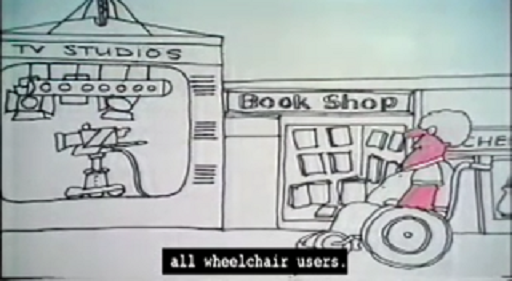2.2 The impact of social attitudes on exclusion: disability
For a person with a disability, especially for those with a physical disability or impairment, the social environment can be especially challenging. Watch the next video now, to experience some aspects of what this may feel like.

Transcript: Video 2
This video highlights the way the environment can restrict access and participation in society, which can be described as the Social Model for understanding the experience of disability. The social model was developed by disabled activists and presented as a challenge to the more traditional Medical Model, which ‘individualises’ disability and sees disability as a deficit in the person who is seen as needing treatment. This can also lead to a view that people with disabilities are responsible for inconveniences resulting from their impairments. The social model rejects the idea that people with disabilities need to adapt through treatments or therapies. The responsibility for the inconveniences and limitations on disabled people’s lives is placed with society. This requires both a change in attitudes towards people with disabilities and also the removal of physical barriers that exclude or restrict people with disabilities.
In response to the social model, Oliver (2004) highlights the Citizenship Approach, which suggests that in practical terms service users should be supported to be able to exercise as much control over their lives as possible. In such a context they would define their own needs and choose how these are met. Services making provision for relevant legislation would need to involve service users in discussions about strategies for practical implementation that would enhance their lives.
An understanding of the social model of disability is an important aspect of anti-oppressive practice. It encourages social workers to focus on the service user’s own perception of their situation. A social worker using the social model would look, with the service user, at the physical and social barriers that are preventing them from leading the lifestyle that they desire. These barriers would be identified and ways of redressing them would be explored, rather than assuming that the person’s disability makes these obstacles inevitable. People with disabilities may face stereotypical attitudes that categorise them as dependent, vulnerable and possibly passive. Social workers may not be able to change the discriminatory attitudes in society, although they have a role to play in challenging them. However, even if social workers can only bring about small changes to a service user’s physical environment, the social model of disability provides a critique that promotes practice that takes account of service users’ perspectives, resources and wishes.
